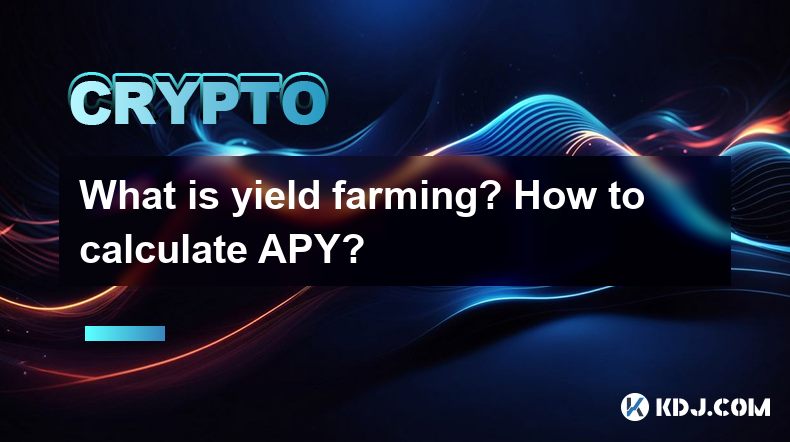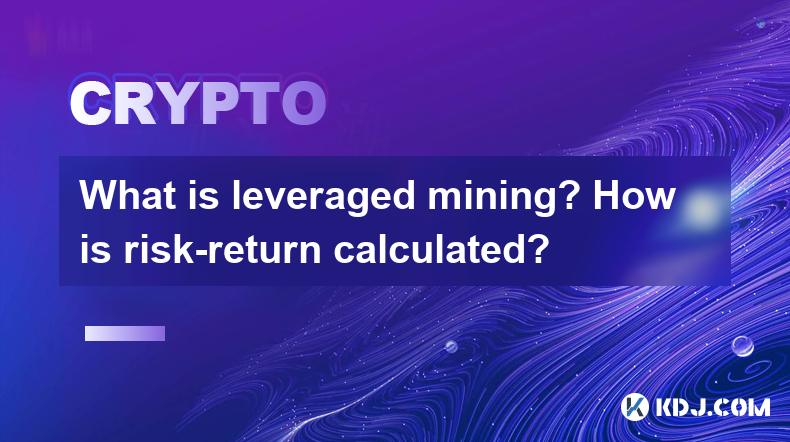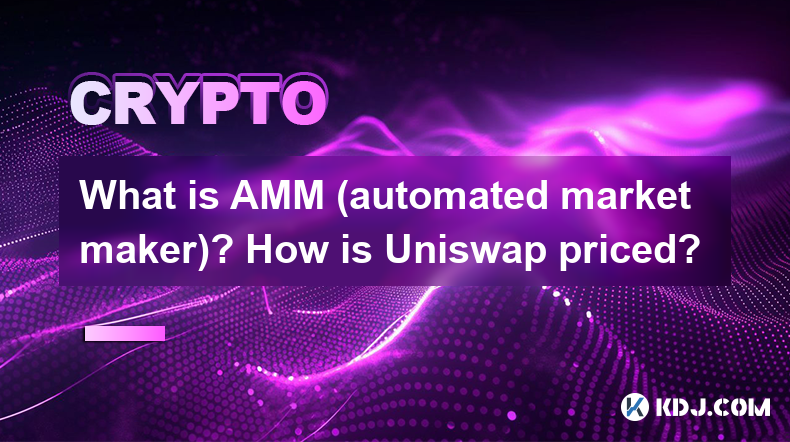-
 Bitcoin
Bitcoin $85,545.5756
0.52% -
 Ethereum
Ethereum $1,633.8639
-2.30% -
 Tether USDt
Tether USDt $0.9999
0.01% -
 XRP
XRP $2.1574
-0.27% -
 BNB
BNB $587.6789
-0.59% -
 Solana
Solana $131.8962
-1.32% -
 USDC
USDC $0.9999
0.00% -
 Dogecoin
Dogecoin $0.1583
-4.80% -
 TRON
TRON $0.2482
-2.97% -
 Cardano
Cardano $0.6350
-2.69% -
 UNUS SED LEO
UNUS SED LEO $9.4308
0.23% -
 Avalanche
Avalanche $19.9351
-3.15% -
 Chainlink
Chainlink $12.5633
-4.59% -
 Stellar
Stellar $0.2414
-1.97% -
 Toncoin
Toncoin $2.9903
5.34% -
 Sui
Sui $2.1852
-6.20% -
 Shiba Inu
Shiba Inu $0.0...01191
-3.51% -
 Hedera
Hedera $0.1641
-3.49% -
 Bitcoin Cash
Bitcoin Cash $329.2624
-3.24% -
 Litecoin
Litecoin $77.3033
-1.84% -
 Polkadot
Polkadot $3.6560
-2.80% -
 Dai
Dai $1.0000
0.00% -
 Hyperliquid
Hyperliquid $15.9463
-0.09% -
 Bitget Token
Bitget Token $4.3407
0.66% -
 Ethena USDe
Ethena USDe $0.9991
0.02% -
 Pi
Pi $0.6780
-10.14% -
 Monero
Monero $215.1654
3.07% -
 Uniswap
Uniswap $5.3589
-3.80% -
 OKB
OKB $52.1792
-1.52% -
 Pepe
Pepe $0.0...07278
-4.45%
What is yield farming? How to calculate APY?
Yield farming offers passive income through DeFi, but it's complex and risky; understanding APY, platform security, and market volatility is crucial for success.
Apr 14, 2025 at 11:00 am

Yield farming, also known as liquidity mining, is a popular way for cryptocurrency users to earn passive income by lending or staking their digital assets. It involves providing liquidity to decentralized finance (DeFi) protocols in exchange for rewards, often in the form of additional tokens. Yield farming can be a lucrative but complex process, requiring users to understand the various platforms, risks, and reward structures involved.
To get started with yield farming, users typically need to connect their cryptocurrency wallets to a DeFi platform. They then deposit their tokens into liquidity pools, which are used to facilitate trading and other financial activities within the protocol. In return, users receive rewards, which can vary based on the specific platform and the amount of liquidity they provide. It's important for users to research and understand the risks involved, as yield farming can be subject to high volatility and potential losses.
Understanding APY in Yield Farming
Annual Percentage Yield (APY) is a crucial metric in yield farming, as it indicates the potential return on investment over a year. APY takes into account the effect of compounding, which can significantly increase the overall return compared to simple interest. To calculate APY, you need to know the interest rate and the frequency of compounding.
The formula for calculating APY is as follows:
[ \text{APY} = (1 + \frac{\text{interest rate}}{\text{number of compounding periods}})^{(\text{number of compounding periods})} - 1 ]
For example, if a yield farming platform offers a 10% annual interest rate compounded monthly, the APY would be calculated as:
[ \text{APY} = (1 + \frac{0.10}{12})^{12} - 1 \approx 0.1047 \text{ or } 10.47\% ]
This means that if you leave your funds in the yield farming pool for a year, you could expect to earn approximately 10.47% on your initial investment.
How to Calculate APY in Yield Farming
Calculating APY in yield farming can be more complex due to the dynamic nature of DeFi platforms. Here are the steps to calculate APY for a yield farming pool:
- Identify the interest rate: Determine the percentage of rewards you will earn annually. This can often be found on the platform's website or through their documentation.
- Determine the compounding frequency: Find out how often the rewards are compounded. Common frequencies include daily, weekly, or monthly.
- Use the APY formula: Plug the interest rate and compounding frequency into the APY formula mentioned above to calculate your expected annual yield.
For instance, if a platform offers a 5% annual reward rate compounded daily, the APY would be:
[ \text{APY} = (1 + \frac{0.05}{365})^{365} - 1 \approx 0.0513 \text{ or } 5.13\% ]
This calculation shows that daily compounding can slightly increase the effective annual yield compared to monthly compounding.
Factors Affecting APY in Yield Farming
Several factors can influence the APY in yield farming, including:
- Liquidity Pool Size: Larger pools often attract more users and can offer higher rewards due to increased trading volume.
- Token Price Volatility: The value of the rewards you earn can fluctuate, affecting the overall return on your investment.
- Platform Fees: Some platforms charge fees for using their services, which can reduce the effective APY.
- Impermanent Loss: When providing liquidity to pools with two or more tokens, changes in the relative prices of those tokens can lead to temporary losses.
Understanding these factors is essential for making informed decisions about which yield farming opportunities to pursue.
Choosing the Right Yield Farming Platform
Selecting the right yield farming platform is crucial for maximizing your returns and minimizing risks. Here are some key considerations when choosing a platform:
- Security: Look for platforms with strong security measures, such as smart contract audits and insurance funds.
- User Interface: A user-friendly interface can make it easier to manage your investments and track your rewards.
- Reward Structure: Different platforms offer different types of rewards, such as native tokens or stablecoins. Consider which type of reward aligns best with your investment goals.
- Community and Support: Platforms with active communities and responsive support teams can provide valuable insights and assistance when needed.
By carefully evaluating these factors, you can choose a yield farming platform that best suits your needs and risk tolerance.
Risks and Challenges of Yield Farming
While yield farming can offer attractive returns, it also comes with several risks and challenges. Some of the key risks include:
- Smart Contract Vulnerabilities: DeFi platforms rely on smart contracts, which can be susceptible to hacks and exploits.
- Liquidity Risks: If a large number of users withdraw their funds from a liquidity pool, it can lead to a decrease in the pool's value and potential losses for remaining participants.
- Regulatory Uncertainty: The regulatory landscape for DeFi and yield farming is still evolving, which can pose legal risks for participants.
- Complexity: Yield farming can be complex, requiring a good understanding of blockchain technology and financial markets.
It's important for users to conduct thorough research and consider their risk tolerance before engaging in yield farming.
Frequently Asked Questions
Q: What is the difference between APY and APR in yield farming?
A: APY (Annual Percentage Yield) takes into account the effect of compounding, while APR (Annual Percentage Rate) does not. This means that APY will generally be higher than APR, especially with more frequent compounding.
Q: Can I lose money in yield farming?
A: Yes, there are several ways you can lose money in yield farming, including smart contract hacks, impermanent loss, and changes in token prices. It's important to understand these risks before participating.
Q: How often should I check my yield farming investments?
A: It's a good idea to monitor your yield farming investments regularly, at least weekly, to track your rewards and stay informed about any changes in the platform or market conditions.
Q: Are there any tools to help me calculate APY for yield farming?
A: Yes, there are several online calculators and tools designed specifically for calculating APY in yield farming. These tools can help you estimate your potential returns based on different scenarios and platforms.
Disclaimer:info@kdj.com
The information provided is not trading advice. kdj.com does not assume any responsibility for any investments made based on the information provided in this article. Cryptocurrencies are highly volatile and it is highly recommended that you invest with caution after thorough research!
If you believe that the content used on this website infringes your copyright, please contact us immediately (info@kdj.com) and we will delete it promptly.
- Bitcoin (BTC) Stands Above Other Crypto Assets Amidst Ongoing Economic Turbulence
- 2025-04-15 21:25:13
- Ethereum (ETHUSD) Shows Signs of Consolidation After a Modest Intraday Dip
- 2025-04-15 21:25:13
- Despite Macroeconomic Uncertainty, the Market Caps of Tether (USDT) and USD Coin (USDC) Have Grown Substantially Over the Past Eight Months
- 2025-04-15 21:20:12
- The Pi Network (PI) Has Returned to Crypto News in a Big Way Following a Dramatic 35% Increase
- 2025-04-15 21:20:12
- Pfizer (NYSE: PFE) recently reminded investors how risky the drug-development business can be.
- 2025-04-15 21:15:12
- Dogecoin Exchange Traded Product (ETP) Launches on SIX Swiss Exchange, Opening the Meme Coin to Institutional Investors
- 2025-04-15 21:15:12
Related knowledge

What is impermanent loss insurance? What are the solutions?
Apr 12,2025 at 01:14am
What is Impermanent Loss Insurance? What are the Solutions? Impermanent loss is a significant concern for liquidity providers in decentralized finance (DeFi) platforms. It occurs when the price of tokens in a liquidity pool changes compared to when they were deposited, leading to a potential loss if the provider decides to withdraw their liquidity. To m...

What are algorithmic stablecoins? How do they maintain anchoring?
Apr 12,2025 at 11:35am
Algorithmic stablecoins represent a fascinating and innovative segment within the cryptocurrency ecosystem. These digital assets are designed to maintain a stable value, typically pegged to a fiat currency like the US dollar, through the use of algorithms rather than traditional collateral. This approach distinguishes them from other types of stablecoin...

What is leveraged mining? How is risk-return calculated?
Apr 11,2025 at 04:07pm
What is Leveraged Mining? How is Risk-Return Calculated? Leveraged mining is a strategy used in the cryptocurrency space where miners borrow funds to increase their mining capacity and potential returns. This approach can amplify both profits and losses, making it a high-risk, high-reward endeavor. Understanding how to calculate the risk and return asso...

What is an aggregator? How does 1inch optimize transaction paths?
Apr 12,2025 at 05:00pm
An aggregator in the cryptocurrency space is a tool that compiles and compares data from multiple decentralized exchanges (DEXs) to find the best possible trading routes and prices for users. Aggregators are essential for traders looking to optimize their transactions, as they can automatically search through various liquidity sources to ensure the most...

What is a flash loan? Why does it not require collateral?
Apr 11,2025 at 12:57pm
A flash loan is a type of loan that is unique to the decentralized finance (DeFi) ecosystem. It allows borrowers to take out a loan without the need for collateral, and the loan must be repaid within the same transaction. This type of loan is facilitated by smart contracts on blockchain platforms, most commonly on the Ethereum network. The concept of a ...

What is AMM (automated market maker)? How is Uniswap priced?
Apr 11,2025 at 06:57pm
What is AMM (Automated Market Maker)? How is Uniswap Priced? Automated Market Makers (AMMs) are a type of decentralized exchange protocol that use algorithms to price assets instead of traditional order books. The most well-known AMM is Uniswap, which has become a cornerstone of the decentralized finance (DeFi) ecosystem. This article will delve into th...

What is impermanent loss insurance? What are the solutions?
Apr 12,2025 at 01:14am
What is Impermanent Loss Insurance? What are the Solutions? Impermanent loss is a significant concern for liquidity providers in decentralized finance (DeFi) platforms. It occurs when the price of tokens in a liquidity pool changes compared to when they were deposited, leading to a potential loss if the provider decides to withdraw their liquidity. To m...

What are algorithmic stablecoins? How do they maintain anchoring?
Apr 12,2025 at 11:35am
Algorithmic stablecoins represent a fascinating and innovative segment within the cryptocurrency ecosystem. These digital assets are designed to maintain a stable value, typically pegged to a fiat currency like the US dollar, through the use of algorithms rather than traditional collateral. This approach distinguishes them from other types of stablecoin...

What is leveraged mining? How is risk-return calculated?
Apr 11,2025 at 04:07pm
What is Leveraged Mining? How is Risk-Return Calculated? Leveraged mining is a strategy used in the cryptocurrency space where miners borrow funds to increase their mining capacity and potential returns. This approach can amplify both profits and losses, making it a high-risk, high-reward endeavor. Understanding how to calculate the risk and return asso...

What is an aggregator? How does 1inch optimize transaction paths?
Apr 12,2025 at 05:00pm
An aggregator in the cryptocurrency space is a tool that compiles and compares data from multiple decentralized exchanges (DEXs) to find the best possible trading routes and prices for users. Aggregators are essential for traders looking to optimize their transactions, as they can automatically search through various liquidity sources to ensure the most...

What is a flash loan? Why does it not require collateral?
Apr 11,2025 at 12:57pm
A flash loan is a type of loan that is unique to the decentralized finance (DeFi) ecosystem. It allows borrowers to take out a loan without the need for collateral, and the loan must be repaid within the same transaction. This type of loan is facilitated by smart contracts on blockchain platforms, most commonly on the Ethereum network. The concept of a ...

What is AMM (automated market maker)? How is Uniswap priced?
Apr 11,2025 at 06:57pm
What is AMM (Automated Market Maker)? How is Uniswap Priced? Automated Market Makers (AMMs) are a type of decentralized exchange protocol that use algorithms to price assets instead of traditional order books. The most well-known AMM is Uniswap, which has become a cornerstone of the decentralized finance (DeFi) ecosystem. This article will delve into th...
See all articles























































































